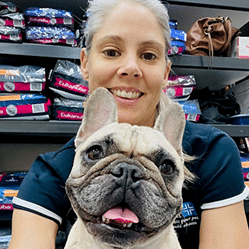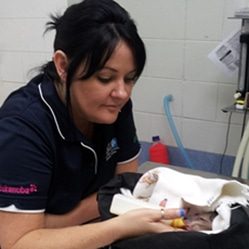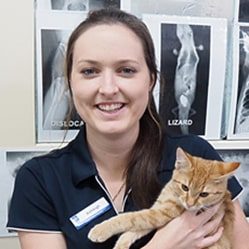Old cats often have stiff old bones. These poor pets creak and hobble around the house, struggle up and down stairs and work especially hard to get to their feet in the chilly mornings. Don’t assume that this is a normal ‘old age thing’ and that nothing can be done.The truth is that old pets with arthritis have a new lease on life if treated properly and there is no reason to allow your dog to suffer the pain of ‘old bones’.
What causes arthritis?
Arthritis is caused by wear and tear on the joints in an animal’s body. Sometimes the cause is some form of trauma to the joints such as that which occurs with sprains and fractures. Joints can develop in an abnormal way and arthritis results. Inflammatory conditions and infections in the joints will also cause arthritis.
Once a joint is injured, a cascade of damaging enzymes is released from the injured tissues. These enzymes cause further damage to the joint structure. The damaging enzymes spread deep into cracks that appear in the joint cartilage, severely damaging the underlying bone. The irritation causes the bone to react aggressively and boney outgrowths and spikes grow into and around the joint, crippling the pet and causing continual pain.
How will I know my pet has arthritis?
Arthritis makes movement painful. For this reason, an affected cat will be reluctant to exercise and is less likely to jump, play or chase balls. It is likely to have difficulty climbing stairs, whereas previously this was not an issue. Sometimes, these early signs are missed or ignored. That’s a big mistake because early treatment will really slow down the progression of the disease and will give pets a much better quality of life.
Although arthritis is common in old cats it is very often missed. Affected cats have problems grooming themselves and look untidy. They walk with little quick back leg movements and often have difficulty using their litter tray accurately as they cannot squat when toileting. They may also be unable to jump up on the couch anymore and tend to sleep on the floor instead. Certainly any animal with arthritis ‘loses its spark’ and has a reduced quality of life.
How will my vet treat the arthritis?
Your veterinarian is likely to use medication to reduce the pain and to give your cat back some quality of life. Modern anti-arthritic medications are called non-steroidal anti-inflammatory drugs (NSAIDs). There is a wide variety available and for cats there are injectable and oral formulas available. While cats may improve with medical treatment, the medications do not cure the arthritis. In many cases, animals affected by arthritis will need to be on medication for the rest of their lives.
Surgery may be indicated to correct any underlying deformities, to stabilise joints affected by ligament ruptures, or to alleviate discomfort. The success of surgery depends on the condition being treated and the amount of degenerative changes already present. Surgery may also be indicated in some severe cases such as to remove the hip, or fuse the affected joint (arthrodesis).
Your vet may also advise the use of compounds often called nutraceuticals. A nutraceutical is any substance that is a food or part of a food that provides medical or health benefits, including the prevention and treatment of disease. Chondroitin and glucosamine are two nutraceuticals that are useful in arthritis as they assist in rebuilding the cartilage of the joint surface.
What can I do at home?
In cold weather arthritis is always worse. Make sure your pet has comfortable bedding and a warm place to sleep. Cats may need the bed in a less elevated psoition and consider a larger litter tray with low sides or cut out at the fron so it can enter easily. Don’t forget that early treatment for arthritis is the key to pain-free years as your pet ages.









































